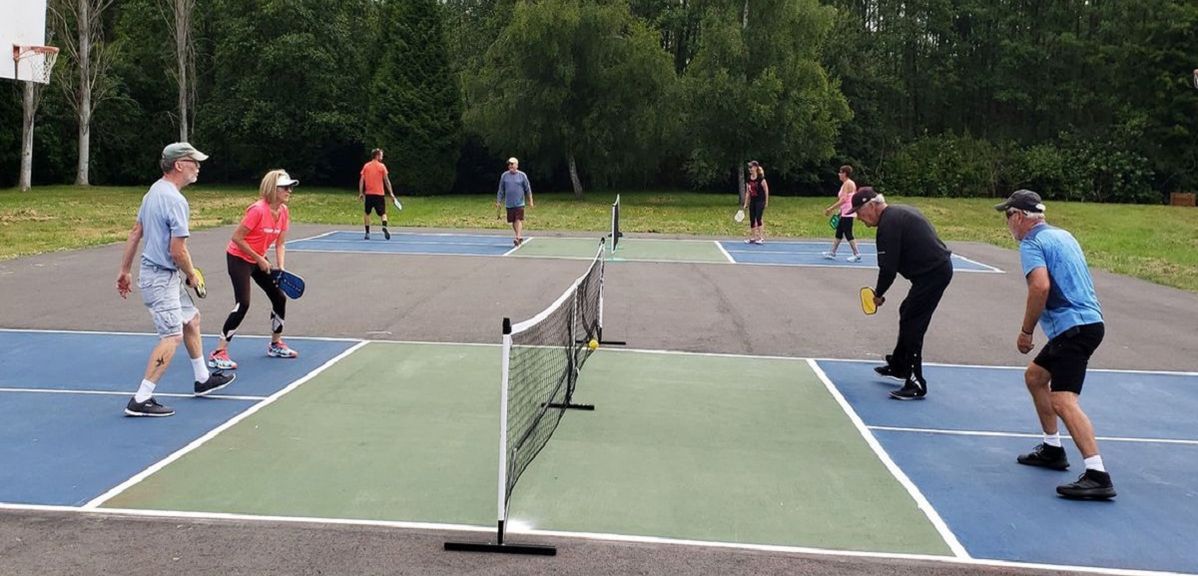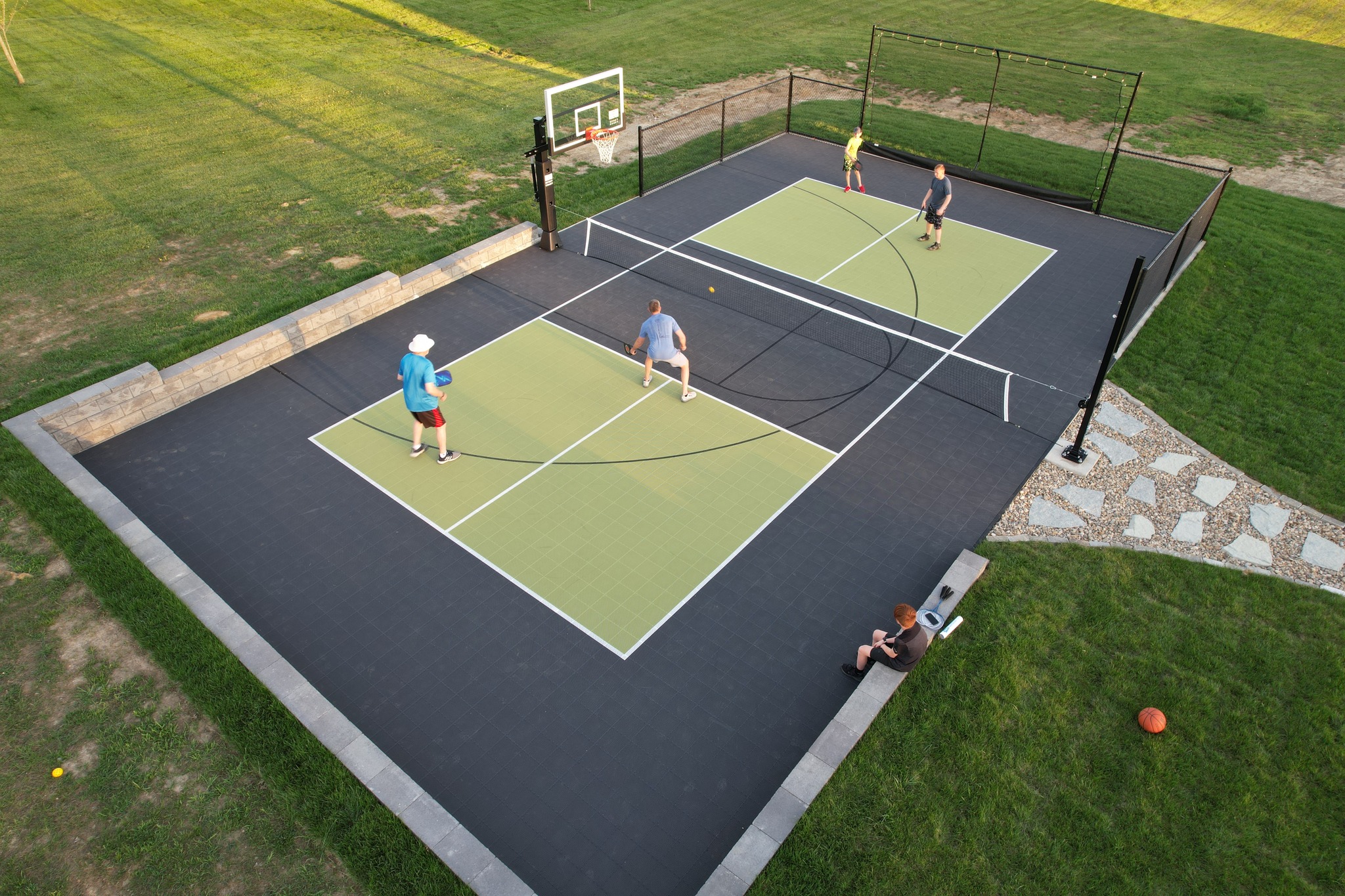Variables to Think About for Top Quality Pickleball Court Construction and Design
Boost Citizen Engagement With Community-Driven Pickleball Court Projects
The introduction of community-driven pickleball court projects offers a special possibility to foster neighborhood involvement and reinforce neighborhood ties. The genuine inquiry stays: just how can these grassroots efforts be purposefully executed to make certain sustainability and inclusivity in diverse neighborhoods?
Importance of Neighborhood Involvement
Area involvement is a critical element in the successful growth of pickleball court projects, as it cultivates a sense of possession and cumulative responsibility amongst locals. When area participants are proactively entailed in the planning and application phases, they are a lot more likely to advocate for the job's long-term success. Engaging stakeholders such as regional players, family members, and leisure teams ensures that the centers satisfy the diverse needs and preferences of the community.
Furthermore, neighborhood engagement cultivates a supportive setting where locals feel empowered to contribute their concepts and resources. Pickleball court construction. This collective approach can lead to cutting-edge solutions that boost the layout and capability of the courts, making them much more enticing to a larger audience. In addition, including locals in decision-making procedures can strengthen social ties, promoting inclusivity and unity within the area
The exposure of community support for a pickleball task can also play a crucial duty in protecting funding and authorization from neighborhood authorities. By showing a shared dedication to recreational development, areas can properly advocate for resources and plan adjustments that prefer the establishment of pickleball courts, eventually enhancing the neighborhood culture and entertainment landscape.
Actions to Initiate a Task
Launching a pickleball court job needs a systematic technique that develops on the structure of community involvement developed in previous conversations. The initial step is to set up a job committee consisting of local stakeholders, fanatics, and representatives from pertinent organizations. This diverse team makes certain that multiple point of views are thought about.
Following, carry out a demands assessment within the community. Surveys, emphasis groups, and public conferences can be effective in evaluating rate of interest and celebration input on potential court areas, wanted services, and organizing preferences. Following this, develop a project plan detailing objectives, timelines, and duties.
As soon as the plan is in place, involve with regional authorities to understand zoning guidelines and any type of needed permits. Connecting transparently with the area throughout this procedure is critical, as it fosters depend on and urges additional engagement.
Furthermore, organizing area events can help preserve momentum and enthusiasm. These events can work as platforms for further conversation and assistance to reinforce neighborhood connections. Paper every step taken and maintain comprehensive documents, as this will certainly be useful for future stages of the job, consisting of funding and source purchase.
Financing and Resources Available
Protecting funding and resources for a pickleball court project is often a critical action that can establish the task's expediency and success. Numerous opportunities exist for getting financial backing, ranging from public funding to personal sponsorships. City government gives, frequently targeted at promoting community wellness and recreation, can offer substantial sponsorship for such efforts.
Along with federal government resources, nonprofit organizations and structures often use grants particularly for sports and community growth jobs. Engaging local companies as enrollers can also be a worthwhile strategy; several business are excited to buy community initiatives that enhance their business social duty profile.
Crowdfunding systems have actually arised as a viable choice for grassroots fundraising, allowing area participants to add directly to the job. This strategy not just increases funds but likewise promotes a sense of possession amongst participants.
Style and Planning Factors To Consider
Reliable design and preparation are basic components of any kind of successful pickleball court job adhering to the procurement of financing and resources. A comprehensive evaluation of the suggested place is crucial; this includes evaluating accessibility, distance to existing area facilities, and the possibility for exposure and engagement.
The format of the court must follow main dimension requirements while considering the bordering environment. Integrating attributes such as seats, shade structures, and appropriate lighting can significantly enhance gamer experience and spectator enjoyment. Products selected for the court surface ought to prioritize durability and safety, with alternatives like acrylic or asphalt offering ideal efficiency.
Involving neighborhood participants in the design procedure fosters a sense of possession and makes sure that the facility meets local needs - Pickleball court construction. This can be achieved through public appointments and surveys, permitting stakeholders to express their choices and problems
Sustainability must additionally be a top priority; integrating eco-friendly materials and methods can add to long-lasting viability. Producing a maintenance plan to make certain the court continues to be in excellent condition will certainly support ongoing area involvement and engagement in pickleball activities.

Success Stories and Study
Highlighting the transformative influence of community-driven efforts, numerous success stories illustrate just how collective efforts have actually led to the advancement of vivid pickleball courts across various regions. One significant example is the campaign content in a little community in Florida, his explanation where citizens grouped to transform an underutilized tennis court right into a specialized pickleball center. Via fundraising occasions and partnerships with local businesses, the neighborhood raised adequate funds to mount brand-new internet, resurfacing, and lines, ultimately fostering a dynamic hub for regional gamers.
In a similar way, in a country area of California, a grassroots activity arised to produce pickleball courts in a regional park. The project not just engaged volunteers for building yet likewise included workshops to engage area members in the sporting activity. Consequently, the courts became a prime focus for social communication and health and fitness, bring in players of any ages.
These situation researches exemplify exactly how community-driven tasks can improve regional interaction, promote exercise, and reinforce social bonds. By learn this here now leveraging cumulative resources and interest, communities can efficiently sustain and produce pickleball centers that serve varied populations and foster a feeling of belonging.

Final Thought
To conclude, community-driven pickleball court projects act as essential tools for boosting neighborhood engagement and cultivating a sense of belonging amongst residents. By focusing on stakeholder involvement throughout the planning and execution phases, these efforts can efficiently resolve diverse area requirements. In addition, leveraging available sources and taking a look at effective study can supply beneficial understandings for future projects. Ultimately, such efforts add to the makeover of public areas right into vibrant centers of fitness and social communication, strengthening community connections.
The development of community-driven pickleball court tasks provides a distinct possibility to promote neighborhood engagement and enhance neighborhood connections.Community interaction is an important element in the successful advancement of pickleball court projects, as it cultivates a sense of ownership and cumulative duty among residents. When neighborhood participants are actively included in the preparation and application stages, they are much more likely to support for the task's long-lasting success.Initiating a pickleball court project calls for a systematic technique that constructs on the foundation of community interaction developed in previous discussions. The task not just engaged volunteers for construction yet additionally consisted of workshops to involve area members in the sport.